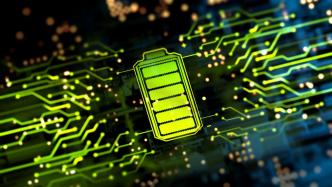How come Japan and South Korea have been "surpassed" by China in solid-state battery technology, which they have been working on for more than ten years?
- 27 August, 2024

As price wars intensify and the "lower limit" of corporate marketing methods becomes lower and lower, the industry may have realized that at the current stage of smart electric vehicle development, core competitiveness can no longer be formed based on simple configuration differences.

It is true that intelligence is considered the "second half" of electrification, and the involution of smart cockpits and smart driving has also ushered in a "golden age" for a large number of technology companies and digital bloggers.
However, when we explore diversified travel scenarios, is its essence "travel" or "scenario"?
The answer is not controversial. If the quality of the trip itself cannot be guaranteed, then the scenario will be out of the question. For an electric vehicle, the core component that ensures travel quality is the power battery - no one.
2024 may be a turning point in the power battery industry. The just-launched Zhiji L6 uses semi-solid-state batteries; then GAC Group announced the progress of all-solid-state battery technology at the 2024 Technology Day, which is expected to be installed on Haopin models in 2026.
Whether it’s a coincidence or intentional, on April 17, Nissan also announced its solid-state battery plan. According to foreign media reports, the Japanese automaker will start trial production of solid-state batteries in March 2025 and plans to achieve a monthly production capacity of 100 megawatt hours in 2028.
A technological revolution from liquid batteries to solid-state batteries is beginning.
Compared with liquid batteries, solid-state batteries are safer. Because it uses solid electrolyte instead of liquid electrolyte, it fundamentally eliminates safety hazards such as leakage and short circuit inside the battery. The high stability of this solid electrolyte allows solid-state batteries to maintain good safety under extreme conditions, significantly reducing the risk of battery fires and explosions.
Solid-state batteries also have higher energy density. Solid-state batteries are capable of storing more energy in the same volume due to the higher ionic conductivity and lower interfacial resistance of solid-state electrolytes. This means that, for the same weight or volume, solid-state batteries can provide longer range, making them ideal for use in electric vehicles.
Solid-state batteries also have longer cycle life. The solid electrolyte overcomes the problem of the solid electrolyte interface film formed by the liquid electrolyte during the charge and discharge process and reduces the loss inside the battery, thereby extending the service life of the battery. Previously, NIO Chairman Li Bin called on the industry to pay attention to the issue of battery life, which can be solved through solid-state batteries.
Not only that, but its charging speed and environmental adaptability have also been greatly enhanced, making there almost no performance difference between batteries in the north and south.
So now that car companies have mass-produced solid-state batteries, will people be able to eliminate range anxiety in the near future and electric vehicles will no longer catch fire? Not really.
Take the battery on the Zhiji L6 as an example. It is a semi-solid battery. According to Qingtao Energy, the supplier of this battery, the positive electrode in the battery is still a traditional ternary material, while silicon carbon is added to the negative electrode to limit expansion. In order to enhance the lithium ion conductivity of the solid electrolyte, Qingtao Energy added 10% wetting solution to the electrolyte, reducing the total liquid content by about 5% compared with traditional ternary lithium batteries.
Professor Zhang Xi, director of the Intelligent Vehicle Research Institute of Shanghai Jiao Tong University, told The Paper: "Semi-solid batteries are a transitional technology. In the battery on the Zhiji L6, the electrolyte uses oxides, not the mainstream of solid-state batteries. Sulfide route. As long as the electrolyte is liquid, experiencing rapid charge and discharge will still affect battery life."
Let’s take a look at the “all-solid-state battery” released by GAC Group on Technology Day. GAC Group emphasized that this all-solid-state battery to be used in Haopin uses 100% solid electrolyte and has the characteristics of ultra-high energy density, ultra-strong intrinsic safety, ultra-wide operating temperature range, etc., and has "moved from the laboratory to mass production" application". GAC Aian Laboratory announced last year that it had completed the experimental verification of the interface modification technology of solid-state batteries and announced a new technological breakthrough. This technology will reduce the life decay of solid-state batteries by 50%, and the battery capacity can be maintained at more than 90% after 150 cycles. In February this year, GAC Aian announced that the energy density of Haopin solid-state batteries exceeds 350Wh/kg, with the same weight and three times the power.
This battery will be used in Haopin models in 2026.
For this technology that has just "come out of the laboratory", Zhang Xi said that the technology ultimately depends on its distance from industrialization, and cannot just look at the indicators in the laboratory. "Technical indicators should be looked at comprehensively, including energy density, cycle life, safety and other indicators."
In contrast, Nissan's solid-state battery progress schedule announced is more conservative - trial production in March 2025 and mass production in 2028.
This car company that once ushered in the new energy era with the Nissan Leaf has fallen behind China in the era of booming electrification. Judging from its mass production speed, it still seems to be slower than domestic car companies.
According to public information, Japanese and Korean companies such as Toyota and Panasonic have been developing all-solid-state batteries using sulfide as electrolyte since 2008. They are expected to be mass-produced and put into vehicles in 2027-2028. In contrast, Chinese companies have been There is no advantage in the field of solid-state batteries, so why is there a tendency to catch up with Japan and South Korea?
In this regard, Zhang Xi said that Japanese people are more pragmatic and generally do more than they talk.
On the other hand, Zhang Xi said that although China started late in the field of all-solid-state batteries, it has made fewer detours. Even on the equipment side and process side, we are ahead of Japanese companies.
At present, many companies have announced all-solid-state battery plans. Samsung SDI plans to mass-produce all-solid-state batteries in 2027; Changan Automobile plans to launch 8 self-developed batteries including liquid, semi-solid, and solid batteries by 2030; GAC Aion will achieve mass production and installation of all-solid-state batteries in 2026. The first high-end brand Haopin; Nissan plans to mass-produce and launch it in 2028; Toyota plans to mass-produce all-solid-state batteries in 2030; BMW promises to mass-produce electric vehicles equipped with all-solid-state batteries by 2030; Volkswagen is expected to start using all-solid-state batteries in 2025 Technology; Ford expects to launch models equipped with solid-state batteries in 2026.
Taken together, my country has its own advantages compared with advanced countries such as Japan and South Korea in the field of all-solid-state batteries. But recently, it seems that Chinese car companies are making faster progress. On the one hand, the car companies have sidelined the concept of "semi-solid" out of marketing and traffic considerations; on the other hand, they are using the "quasi-mass production" concept that is not yet fully mature. Technology" is announced in advance, allowing companies to take the lead in occupying a technological high ground and create their own leadership.
Zhang Xi believes that it is not difficult to build a car now because China's industrial chain is already very mature. However, power battery technology spans multiple disciplines and processes, so be careful not to rush for quick success.
Solid-state batteries are a technology that can rewrite the competitive landscape of electric vehicles. In front of solid-state batteries, the gap in liquid battery technology is negligible.
Ouyang Minggao, an academician of the Chinese Academy of Sciences, said at the China Electric Vehicles 100 Forum (2024) that all-solid-state batteries are expected to be industrialized around 2030. He once said that all-solid-state batteries are recognized as one of the first choices for next-generation batteries and are also a key commanding height in the competition of next-generation battery technology, which may bring disruptive risks. The implication is that if China does not conquer the fortress of solid-state batteries in a serious and down-to-earth manner, the advantages China has established in the field of electric vehicles may also be wiped out.










0 Comments